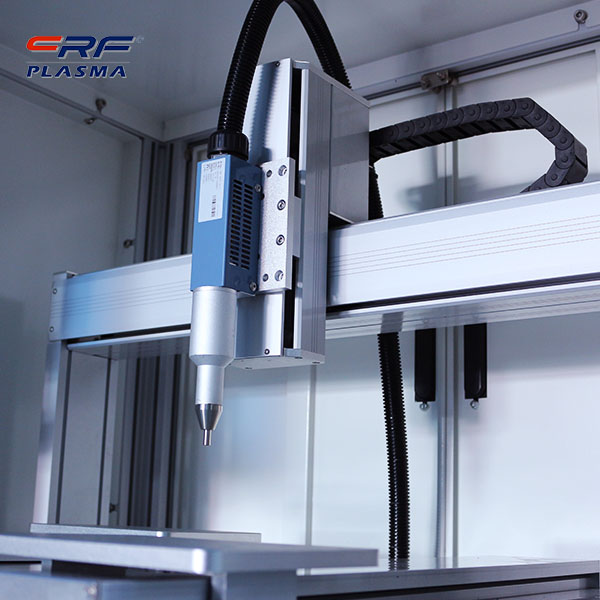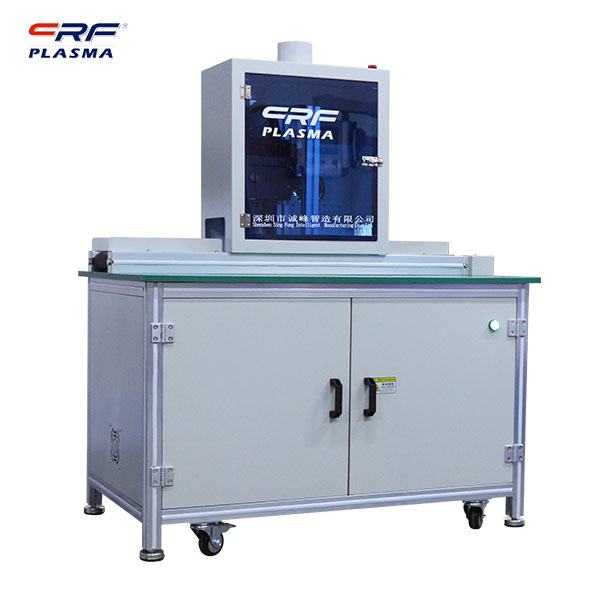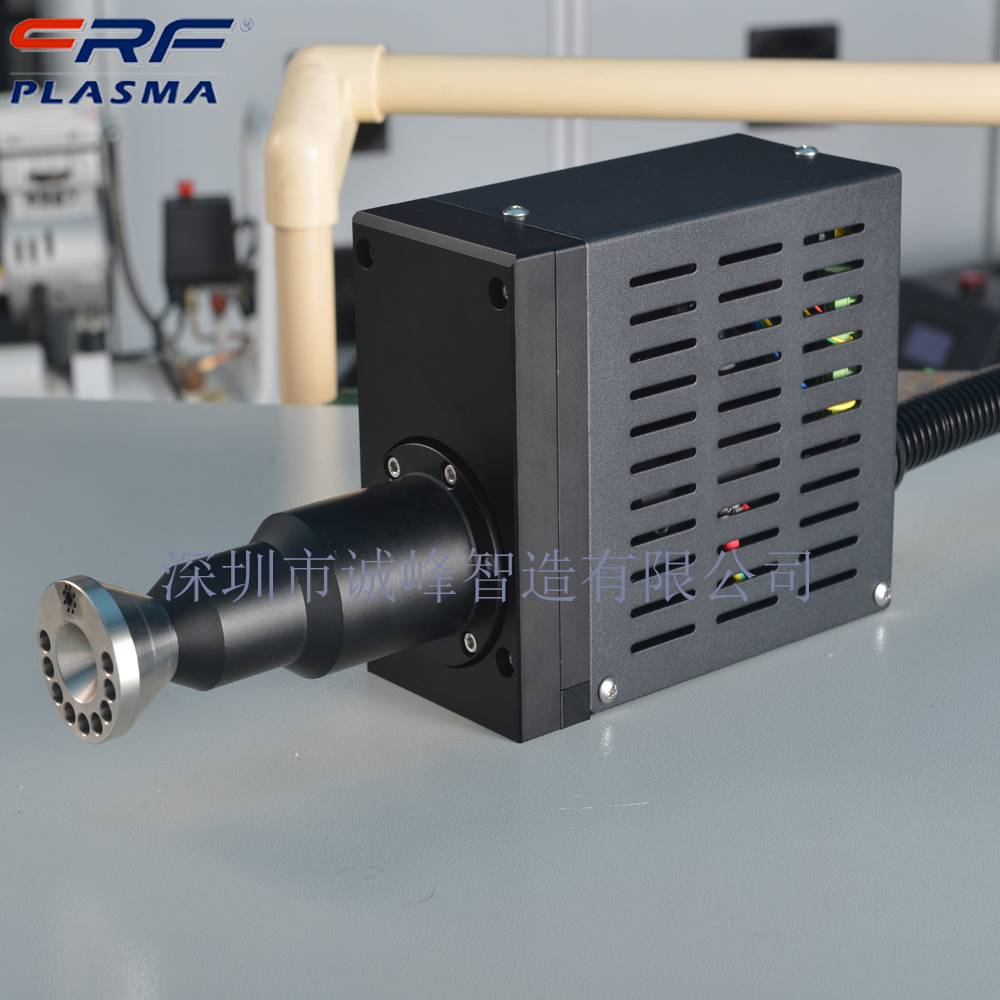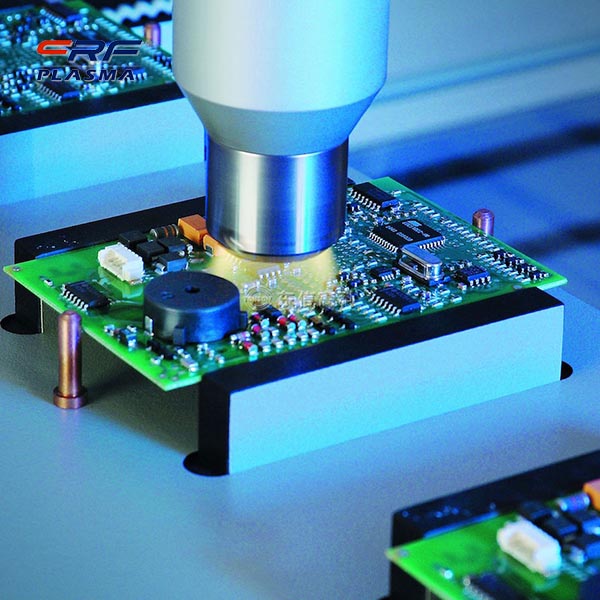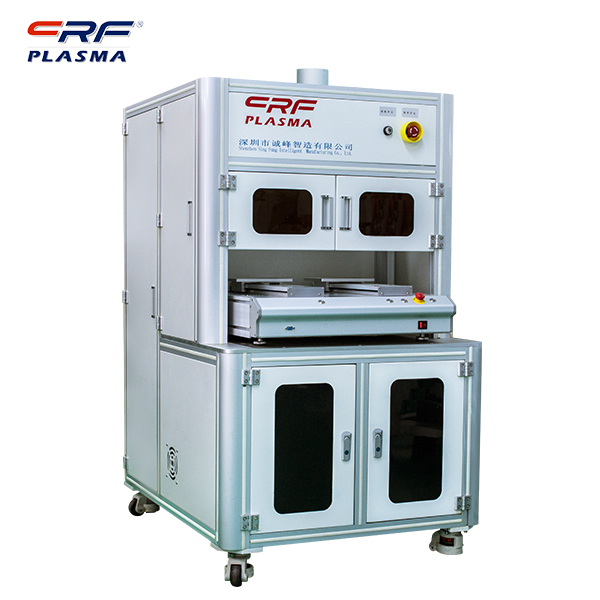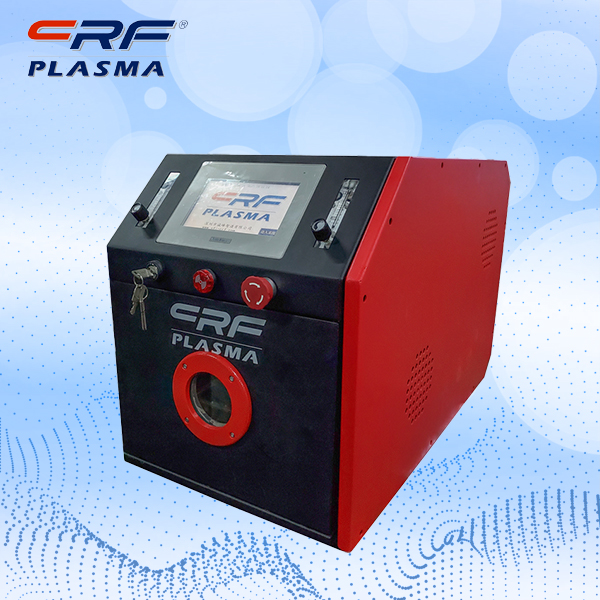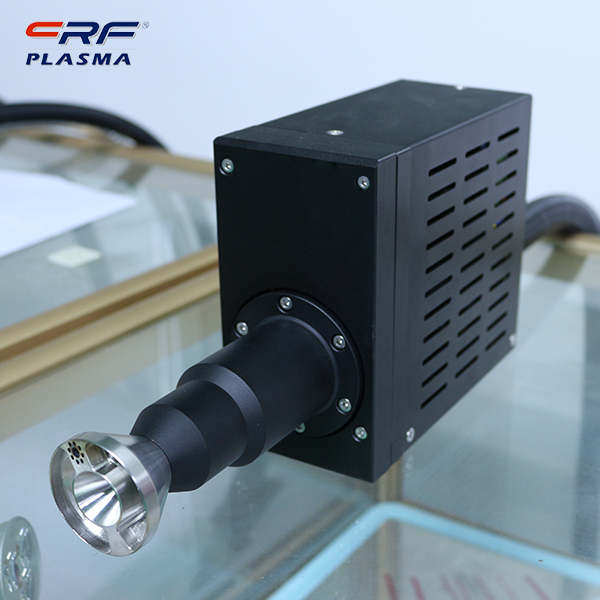
Welcome to Shenzhen Sing Fung Intelligent Manufacturing Co., Ltd.
E-mail:shaobo@sfi-crf.com
The effect of CO2 addition on CH4 conversion reaction under the action of plasma
- Categories:Technical Support
- Author:Plasma cleaning machine-CRF plasma plasma equipment-plasma surface treatment machine manufacturer-chengfeng intelligent manufacturing
- Origin:
- Time of issue:2022-02-10
- Views:
(Summary description)The effect of CO2 addition on CH4 conversion reaction under the action of plasma: In the O2 plasma methane oxidative coupling reaction, the amount of O2 added will directly affect the conversion rate of CH4 and the selectivity of C2 hydrocarbons. is COx(x=1, 2). For the CO2 oxidative CH conversion reaction under the action of plasma plasma, there is also a suitable amount of CO2 addition. The effect of CO2 addition on the conversion rate of CH4, CO2 and product yield can be seen from the results: when the CO2 concentration in the feed gas increases from 15% to 85%, the conversion rate of CH4 increases gradually, and the conversion rate of CO2 changes in a peak shape. When the CO2 concentration is 50%~65%, it reaches as high as about 24%. The research shows that the key step in the oxidation of CH4 by CO2 under the action of plasma plasma is the generation of active species, that is, the high-energy electrons generated by the plasma have elastic or inelastic collisions with CH4 and CO2 molecules, so that CH is successively broken. , generate CHx (x=1~3) free radicals; CO2 breaks C-0 bond to generate reactive oxygen species, which react with CH4 or methyl radicals to generate more CHx (x=1~3) free radicals. The higher the CO2 concentration in the feed gas, the higher the number of reactive oxygen species provided and the higher the CH conversion rate. Therefore, the CH conversion rate is related to two factors, the number of high-energy electrons in the system and the concentration of reactive oxygen species. The CO2 conversion rate is related to collisions between energetic electrons and CO2 molecules, which elastic or inelastic collisions promote: (1) C-O cleavage of CO2 generates CO and O: CO2 + e* → CO2 + O + e (4-1) The depletion of oxygen-reactive species by CH4 favors a rightward shift of the reaction. (2) The ground state CO2 molecules absorb energy and transform into excited state CO2 molecules. Obviously, the CO2 conversion mainly depends on the former. Under the same plasma conditions, the conversion rates of pure CH4 and pure CO2 were 10.9% and 9.4%, respectively. The conversion rates of CH4 and CO2 were higher than the above values when CH4 and CO2 were co-fed, indicating that CH4 and CO2 were co-fed. It is favorable for the co-activation of the two. When the CO2 concentration in the system increased from 15% to 35%, the C2 hydrocarbon yield increased slightly; with the further increase of the CO2 concentration in the system, the C2 hydrocarbon yield gradually decreased. This is because at high CO2 concentration, too many reactive oxygen species in the system interact with CH4 molecules to generate oxidation products on the one hand, and on the other hand, they interact with the generated C2 hydrocarbon products to promote the conversion of C2H6, C2H4, and C2H2 into oxidation products. The CO yield increases with the increase of CO2 concentration, and becomes a constant value when the CO2 concentration is higher than 50%. At the same time, as the CO2 concentration in the system increased from 15% to 85%, the molar ratio of H2 and CO in the product decreased from 3.5 to 0.6. The above research results show that: under certain plasma conditions, in order to obtain a higher C2 hydrocarbon yield and a suitable H2/CO ratio, a lower amount of CO2 addition should be selected. Under the experimental conditions, its value should be 20% to 35%. The distribution of C2 hydrocarbons decreased with the increase of CO2 concentration in the system, and the mole fraction of C2H2 decreased; while the mole fractions of C2H6 and C2H4 showed a rising trend. The possible reasons are: 1. More and more CO2 molecules in the system will absorb more energy, reduce the number of high-energy electrons, and prevent the CH bond of the CH3(CH2) radical from being further broken, resulting in the concentration of CH3, CH2, and CH radicals. distribution changes. The free radical coupling reaction changes the distribution of C2 hydrocarbons in the system; 2. Just as inert gases such as N2 and He play a role in the methane coupling reaction under plasma plasma conditions, the CO2 molecules in the system also play a role as a diluent gas. effect. It is generally believed that methane generates acetylene through the following two paths under plasma conditions: 1. The coupling reaction of CH radicals; 2. The dehydrogenation reaction of C2H6 and C2H4. With the continuous increase of CO2 concentration in the system, a large number of high-energy electrons are consumed, and the collision probability between C2H6, C2H4 and high-energy electrons decreases continuously, further dehydrogenation reaction is hindered, and the generation of C2H4 is further reduced. Therefore, with the increase of CO2 concentration in the system, the mole fractions of C2H6 and C2H4 show a rising trend, while the mole fraction of C2H2 decreases.
The effect of CO2 addition on CH4 conversion reaction under the action of plasma
(Summary description)The effect of CO2 addition on CH4 conversion reaction under the action of plasma:
In the O2 plasma methane oxidative coupling reaction, the amount of O2 added will directly affect the conversion rate of CH4 and the selectivity of C2 hydrocarbons. is COx(x=1, 2). For the CO2 oxidative CH conversion reaction under the action of plasma plasma, there is also a suitable amount of CO2 addition. The effect of CO2 addition on the conversion rate of CH4, CO2 and product yield can be seen from the results: when the CO2 concentration in the feed gas increases from 15% to 85%, the conversion rate of CH4 increases gradually, and the conversion rate of CO2 changes in a peak shape. When the CO2 concentration is 50%~65%, it reaches as high as about 24%. The research shows that the key step in the oxidation of CH4 by CO2 under the action of plasma plasma is the generation of active species, that is, the high-energy electrons generated by the plasma have elastic or inelastic collisions with CH4 and CO2 molecules, so that CH is successively broken. , generate CHx (x=1~3) free radicals; CO2 breaks C-0 bond to generate reactive oxygen species, which react with CH4 or methyl radicals to generate more CHx (x=1~3) free radicals. The higher the CO2 concentration in the feed gas, the higher the number of reactive oxygen species provided and the higher the CH conversion rate. Therefore, the CH conversion rate is related to two factors, the number of high-energy electrons in the system and the concentration of reactive oxygen species. The CO2 conversion rate is related to collisions between energetic electrons and CO2 molecules, which elastic or inelastic collisions promote:
(1) C-O cleavage of CO2 generates CO and O:
CO2 + e* → CO2 + O + e (4-1)
The depletion of oxygen-reactive species by CH4 favors a rightward shift of the reaction.
(2) The ground state CO2 molecules absorb energy and transform into excited state CO2 molecules. Obviously, the CO2 conversion mainly depends on the former.
Under the same plasma conditions, the conversion rates of pure CH4 and pure CO2 were 10.9% and 9.4%, respectively. The conversion rates of CH4 and CO2 were higher than the above values when CH4 and CO2 were co-fed, indicating that CH4 and CO2 were co-fed. It is favorable for the co-activation of the two.
When the CO2 concentration in the system increased from 15% to 35%, the C2 hydrocarbon yield increased slightly; with the further increase of the CO2 concentration in the system, the C2 hydrocarbon yield gradually decreased. This is because at high CO2 concentration, too many reactive oxygen species in the system interact with CH4 molecules to generate oxidation products on the one hand, and on the other hand, they interact with the generated C2 hydrocarbon products to promote the conversion of C2H6, C2H4, and C2H2 into oxidation products. The CO yield increases with the increase of CO2 concentration, and becomes a constant value when the CO2 concentration is higher than 50%. At the same time, as the CO2 concentration in the system increased from 15% to 85%, the molar ratio of H2 and CO in the product decreased from 3.5 to 0.6. The above research results show that: under certain plasma conditions, in order to obtain a higher C2 hydrocarbon yield and a suitable H2/CO ratio, a lower amount of CO2 addition should be selected. Under the experimental conditions, its value should be 20% to 35%.
The distribution of C2 hydrocarbons decreased with the increase of CO2 concentration in the system, and the mole fraction of C2H2 decreased; while the mole fractions of C2H6 and C2H4 showed a rising trend. The possible reasons are: 1. More and more CO2 molecules in the system will absorb more energy, reduce the number of high-energy electrons, and prevent the CH bond of the CH3(CH2) radical from being further broken, resulting in the concentration of CH3, CH2, and CH radicals. distribution changes. The free radical coupling reaction changes the distribution of C2 hydrocarbons in the system; 2. Just as inert gases such as N2 and He play a role in the methane coupling reaction under plasma plasma conditions, the CO2 molecules in the system also play a role as a diluent gas. effect. It is generally believed that methane generates acetylene through the following two paths under plasma conditions: 1. The coupling reaction of CH radicals; 2. The dehydrogenation reaction of C2H6 and C2H4. With the continuous increase of CO2 concentration in the system, a large number of high-energy electrons are consumed, and the collision probability between C2H6, C2H4 and high-energy electrons decreases continuously, further dehydrogenation reaction is hindered, and the generation of C2H4 is further reduced. Therefore, with the increase of CO2 concentration in the system, the mole fractions of C2H6 and C2H4 show a rising trend, while the mole fraction of C2H2 decreases.
- Categories:Technical Support
- Author:Plasma cleaning machine-CRF plasma plasma equipment-plasma surface treatment machine manufacturer-chengfeng intelligent manufacturing
- Origin:
- Time of issue:2022-02-10 18:00
- Views:
The effect of CO2 addition on CH4 conversion reaction under the action of plasma:
In the O2 plasma methane oxidative coupling reaction, the amount of O2 added will directly affect the conversion rate of CH4 and the selectivity of C2 hydrocarbons. is COx(x=1, 2). For the CO2 oxidative CH conversion reaction under the action of plasma plasma, there is also a suitable amount of CO2 addition. The effect of CO2 addition on the conversion rate of CH4, CO2 and product yield can be seen from the results: when the CO2 concentration in the feed gas increases from 15% to 85%, the conversion rate of CH4 increases gradually, and the conversion rate of CO2 changes in a peak shape. When the CO2 concentration is 50%~65%, it reaches as high as about 24%. The research shows that the key step in the oxidation of CH4 by CO2 under the action of plasma plasma is the generation of active species, that is, the high-energy electrons generated by the plasma have elastic or inelastic collisions with CH4 and CO2 molecules, so that CH is successively broken. , generate CHx (x=1~3) free radicals; CO2 breaks C-0 bond to generate reactive oxygen species, which react with CH4 or methyl radicals to generate more CHx (x=1~3) free radicals. The higher the CO2 concentration in the feed gas, the higher the number of reactive oxygen species provided and the higher the CH conversion rate. Therefore, the CH conversion rate is related to two factors, the number of high-energy electrons in the system and the concentration of reactive oxygen species. The CO2 conversion rate is related to collisions between energetic electrons and CO2 molecules, which elastic or inelastic collisions promote:
(1) C-O cleavage of CO2 generates CO and O:
CO2 + e* → CO2 + O + e (4-1)
The depletion of oxygen-reactive species by CH4 favors a rightward shift of the reaction.
(2) The ground state CO2 molecules absorb energy and transform into excited state CO2 molecules. Obviously, the CO2 conversion mainly depends on the former.
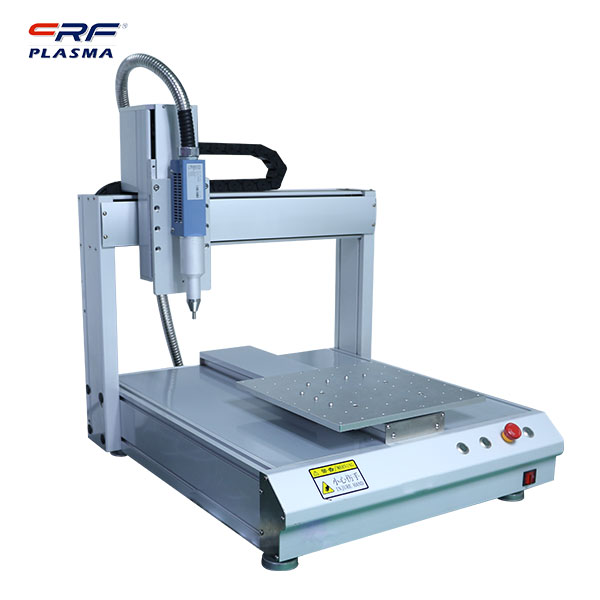 Under the same plasma conditions, the conversion rates of pure CH4 and pure CO2 were 10.9% and 9.4%, respectively. The conversion rates of CH4 and CO2 were higher than the above values when CH4 and CO2 were co-fed, indicating that CH4 and CO2 were co-fed. It is favorable for the co-activation of the two.
Under the same plasma conditions, the conversion rates of pure CH4 and pure CO2 were 10.9% and 9.4%, respectively. The conversion rates of CH4 and CO2 were higher than the above values when CH4 and CO2 were co-fed, indicating that CH4 and CO2 were co-fed. It is favorable for the co-activation of the two.
When the CO2 concentration in the system increased from 15% to 35%, the C2 hydrocarbon yield increased slightly; with the further increase of the CO2 concentration in the system, the C2 hydrocarbon yield gradually decreased. This is because at high CO2 concentration, too many reactive oxygen species in the system interact with CH4 molecules to generate oxidation products on the one hand, and on the other hand, they interact with the generated C2 hydrocarbon products to promote the conversion of C2H6, C2H4, and C2H2 into oxidation products. The CO yield increases with the increase of CO2 concentration, and becomes a constant value when the CO2 concentration is higher than 50%. At the same time, as the CO2 concentration in the system increased from 15% to 85%, the molar ratio of H2 and CO in the product decreased from 3.5 to 0.6. The above research results show that: under certain plasma conditions, in order to obtain a higher C2 hydrocarbon yield and a suitable H2/CO ratio, a lower amount of CO2 addition should be selected. Under the experimental conditions, its value should be 20% to 35%.
The distribution of C2 hydrocarbons decreased with the increase of CO2 concentration in the system, and the mole fraction of C2H2 decreased; while the mole fractions of C2H6 and C2H4 showed a rising trend. The possible reasons are: 1. More and more CO2 molecules in the system will absorb more energy, reduce the number of high-energy electrons, and prevent the CH bond of the CH3(CH2) radical from being further broken, resulting in the concentration of CH3, CH2, and CH radicals. distribution changes. The free radical coupling reaction changes the distribution of C2 hydrocarbons in the system; 2. Just as inert gases such as N2 and He play a role in the methane coupling reaction under plasma plasma conditions, the CO2 molecules in the system also play a role as a diluent gas. effect. It is generally believed that methane generates acetylene through the following two paths under plasma conditions: 1. The coupling reaction of CH radicals; 2. The dehydrogenation reaction of C2H6 and C2H4. With the continuous increase of CO2 concentration in the system, a large number of high-energy electrons are consumed, and the collision probability between C2H6, C2H4 and high-energy electrons decreases continuously, further dehydrogenation reaction is hindered, and the generation of C2H4 is further reduced. Therefore, with the increase of CO2 concentration in the system, the mole fractions of C2H6 and C2H4 show a rising trend, while the mole fraction of C2H2 decreases.
Scan the QR code to read on your phone

TEL:0755-3367 3020 / 0755-3367 3019

E-mail:sales-sfi@sfi-crf.com

ADD:Mabao Industrial Zone, Huangpu, Baoan District, Shenzhen






